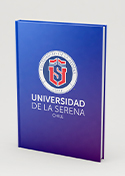Browsing by Author "Nunez Jorge"
Assessing Groundwater Potential in a Mid-Mountain Dryland Area of North-Central Chile through Geospatial Mapping
(2023/08/01) Deformes Jose Miguel; Nunez Jorge; Fairley Jerry P.; Arumi Jose Luis; Oyarzun Ricardo
This study utilized the Random Forest (RF) algorithm to assess groundwater potential (GWP) in the mid-mountain region of the Coquimbo region, north-central Chile. A comprehensive evaluation of twenty-one factors, primarily derived from Digital Elevation Models (DEM) and satellite data, was conducted against a database of 3822 groundwater discharge points. The majority of them consisted of shallow wells with relatively low yields. The main objective was to develop a groundwater potential (GWP) map for the study area. Among the factors considered, six variables, including two anthropogenic factors (distance to roads and presence of agricultural communities) and four natural factors (slope, elevation, concavity, and ruggedness index), were identified as the most influential indicators of GWP. The RF approach demonstrated excellent performance, achieving an Area Under the Curve (AUC) value of 0.95, sensitivity of 0.88, specificity of 0.86, and kappa coefficient of 0.74 in the test set. The majority of the study area exhibited low GWP, while only 14% of the area demonstrated high or very high GWP. In addition to providing valuable guidance for future hydrogeological investigations in the region, the GWP map serves as a valuable tool for identifying the areas that are most vulnerable to water shortages. This is particularly significant, as the region has been severely affected by extended drought, making water supply a critical concern.
Explainable Artificial Intelligence in Hydrology: Interpreting Black-Box Snowmelt-Driven Streamflow Predictions in an Arid Andean Basin of North-Central Chile
(2023/10/01) Nunez Jorge; Cortes Catalina B.; Yanez Marjorie A.
In recent years, a new discipline known as Explainable Artificial Intelligence (XAI) has emerged, which has followed the growing trend experienced by Artificial Intelligence over the last decades. There are, however, important gaps in the adoption of XAI in hydrology research, in terms of application studies in the southern hemisphere, or in studies associated with snowmelt-driven streamflow prediction in arid regions, to mention a few. This paper seeks to contribute to filling these knowledge gaps through the application of XAI techniques in snowmelt-driven streamflow prediction in a basin located in the arid region of north-central Chile in South America. For this, two prediction models were built using the Random Forest algorithm, for one and four months in advance. The models show good prediction performance in the training set for one (RMSE:1.33, R2: 0.94, MAE:0.55) and four (RMSE: 5.67, R2:0.94, MAE: 1.51) months in advance. The selected interpretation techniques (importance of the variable, partial dependence plot, accumulated local effects plot, Shapley values and local interpretable model-agnostic explanations) show that hydrometeorological variables in the vicinity of the basin are more important than climate variables and this occurs both for the dataset level and for the months with the lowest streamflow records. The importance of the XAI approach adopted in this study is discussed in terms of its contribution to the understanding of hydrological processes, as well as its role in high-stakes decision-making.
